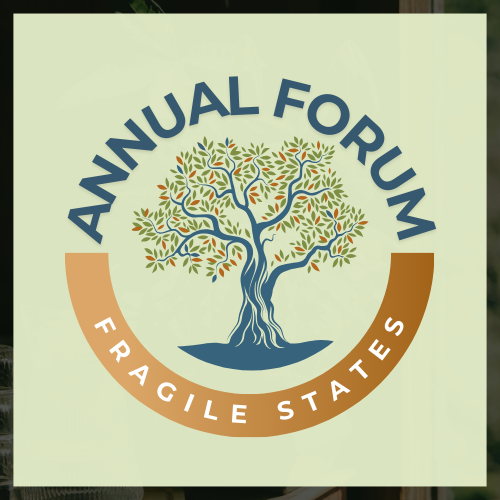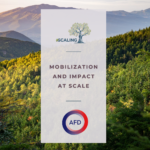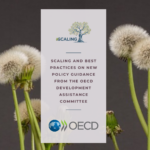
Description
The session, moderated by Robert Chase, featured two presentations. In the first presentation, Alastair McKechnie spoke about scaling the basic health services packages in Afghanistan. The second presentation by Pallavi Roy provided bottom-up solutions from Nigeria’s electricity generation sector.
Afghanistan
Alastair McKechnie explained that in the early 2000s, Afghanistan was emerging from 30 years of war and its health indicators were among lowest in world. It had a non-functional Ministry of Public Health (MoPH); services were mainly provided by NGOs. While the government had clear strategic priorities and wanted funding and coordination through the national budget, most donors had little knowledge of Afghanistan and did not trust the Afghan institutional capacity. However, donors committed large amounts of funding for health. This led to a scramble by NGOs and the UN to secure funding, with incentives to over-promise, and a focus on short-termism, with no strategy for what comes next. There was little effort to strengthen the MoPH, conceptualize Afghanistan’s health system, or systematically connect priorities, strategy, equitable access to services, and national health outcomes at scale.
In 2002 – 2003 the World Bank initiated a national program to provide a package of basic health services, starting on a wide scale. The goals were to establish an architecture for a national health system and build the capacity of NGOs. The MoPH took on the role of “steward” of the health sector, while NGOs took on the role of provider. NGOs bid competitively for provincial health delivery franchises and were expected to receive longer-term, predictable funding.
Short term results exceeded expectations. There was a fall in infant mortality equivalent of 80,000 children’s lives saved each year. Success strengthened government support, and donor skepticism changed to donor support. Donor money “crowded in” as donors ramped up financing, mainly through an Afghanistan Reconstruction Trust Fund (ARFT), which improved donor coordination as part of a wider country platform known as the joint coordination and monitoring board. The ARTF platform strengthened coordination around government leadership, priorities, and budget.
The main political takeaways were: build allies in government and note early results to build credibility and develop these as part of a long-term strategy. The situation demanded quick action with little time for political economy analysis; the ability of senior staff to learn what was working and what wasn’t, and adapt, was critical. The internal political economy of the Bank was also critical for garnering support. Pooled funding arrangements for multi-partner trust funds via a country platform was critical for build trust. The fact that results were delivered in a timely manner also helped build support for getting the program to scale.
This success in the health sector reinforced support for a National Program concept in other sectors, e.g., rural development and education, with similar scaling, financing, and coordination benefits. The success of the program can be gauged by the fact that it continues under the Taliban.
Nigeria
Pallavi Roy opened her presentation with some analytical framing. She explained that successful scaling is about sustainability and raising coping capacities which are inextricably linked to successful governance. Scaling in fragile states must be designed to build resilience so that weak governance mechanisms do not get exacerbated. But none of this is possible without a PE mapping, that is mapping the power, capability, and interests of the relevant actors.
Pallavi described the SOAS-ACE approach of horizontal enforcement where anti-corruption strategies include “insiders”, or productive players interested in upholding rules in their sector for their own benefit. This is more likely to work than top-down vertical enforcement that includes disciplining powerful, politically connected players who have little incentive to adhere to rules. Horizontal enforcement achieves resilience, sustainability, and the impact for scaling required to exit fragility.
Pallavi used a case study from Nigeria to illustrate horizontal enforcement. The Nigerian electricity grid was privatized in 2013 to improve transparency and governance but this exercise only led to politically connected and not necessarily technically competent bidders. All large segments of consumers—residential, industrial, commercial, and small and medium enterprises (SMEs)—resorted to “self-generation”, driving up costs. Due to the extremely poor supply, consumers rationalized not paying bills or stealing electricity. Corruption was therefore deeply embedded and seemingly intractable.
The most plausible anti-corruption strategy is not more transparency and accountability but a sectoral strategy that utilizes a bottom-up approach to identify feasible and implementable solutions that work within the constraints of the sector’s distribution of power, rather than depending on politically connected grid players to deliver reforms.
SOAS-ACE found that SMEs were capable of and willing to follow rules but lacked the power to hold the larger players in the grid accountable. SMEs were also willing to pay for power at prices higher than those notionally available in the grid, as they already self-generate at considerably higher prices. When provided with a solution that was modelled on only supplying electricity to the SME clusters, the monitoring constraint disappeared as they were checking on others who were as powerful as them. This horizontal checking creates a self-sustaining virtuous cycle which enables sustainable rule-following behavior, supporting the intended developmental outcome. Economic risks for potential investors in power generation are reduced because willingness to pay can be established together with horizontal checks that significantly raise the probability of payments.
SOAS-ACE’s first step was a proof of concept which they wanted to follow up with modelling studies. However, SMEs wanted to see the model demonstrated and so SOAS-ACE is moving ahead with a small-scale intervention in a furniture cluster in Abuja which has the promise of scale once horizontal enforcement is established. This might seem like a lot of homework in fragile contexts where solutions are immediately needed, but not doing this homework locks in failure.
Our Panel
|
|
|







